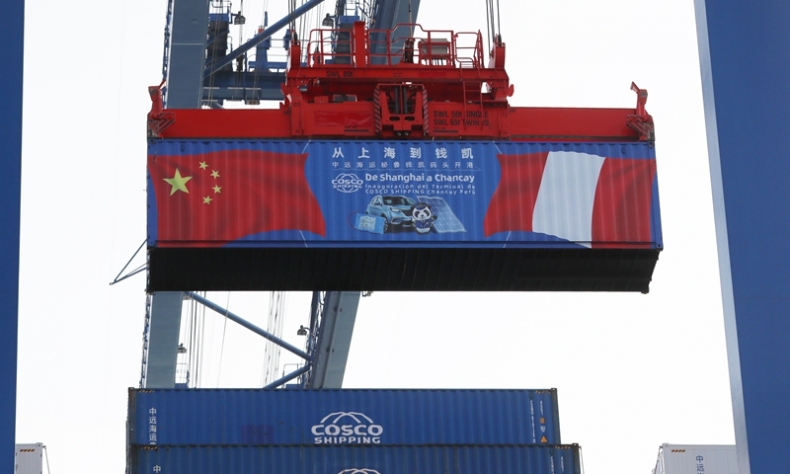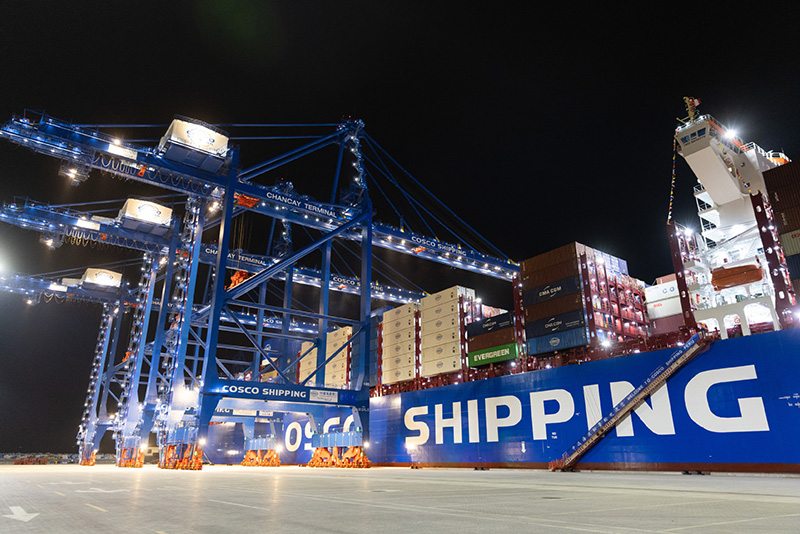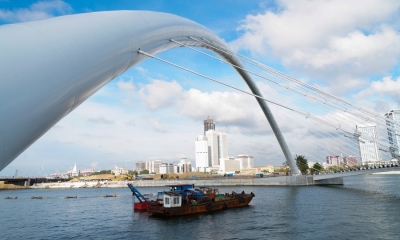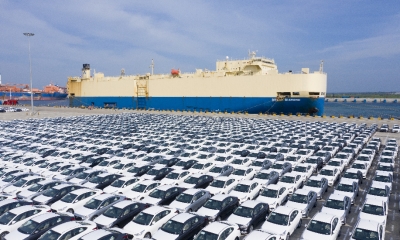Chancay Port: A New Gateway for Trade Between China and Latin America

The positive impact of the Chancay Port on the global maritime transportation industry symbolizes openness and mutually beneficial cooperation between China and Latin America.
On November 14, Chinese President Xi Jinping and Peruvian President Dina Boluarte jointly inaugurated Peru’s Chancay Port, heralding it as the launch of a “new land-sea corridor between China and Latin America.” Funded through China’s Belt and Road Initiative (BRI), this ambitious $3.6 billion project is poised to transform Pacific trade.
A groundbreaking progress for connectivity
Situated along the central Peruvian coastline in the Chancay district of Huaral Province, the port lies approximately 80 kilometers from Lima, the capital city. With its natural deep-water harbour, capable of a maximum depth of 16 meters, it is set to accommodate mega vessels once fully operational.
The port enjoys a unique strategic advantage thanks to its location overlooking the Pacific Ocean. Notably, it serves as a vital link connecting both the East and West hemispheres, as well as the Northern and Southern hemispheres. With its prime geographic positioning and robust connectivity, Chancay Port is poised to become a key hub in the Pacific Ocean, bypassing the need for stops in the United States and Mexico.
Boasting a maximum depth of 17.8 meters and spanning 1,500 meters, the port features four berths—two dedicated to containers and two multi-purposes. These facilities can accommodate the world’s largest container ships. Its design throughput capacity is expected to reach 1 million twenty-foot equivalent units (TEUs) annually in the short term, with a long-term capacity of 1.5 million TEUs.
Previously, ultra-large vessels—up to 400 meters in length and capable of carrying over 18,000 containers—were limited to docking at ports such as Long Beach in the U.S. and Manzanillo in Mexico. Consequently, much of the trade between Asia and South America relied on indirect routes, with smaller ships servicing intermediate ports along the Pacific coast.
However, the opening of Chancay Port, a deep-water, multipurpose facility, now enables it to accommodate ultra-large container ships that could not dock elsewhere in South America, thus revolutionizing trade dynamics in the region.
The port’s opening will significantly boost cargo movement to and from Chile, Ecuador, Colombia, and the Asian continent, establishing vital connections with China, Japan, and South Korea on the west coast of the Pacific Ocean. Moreover, the United States, located on the east coast of the Pacific, stands to benefit from this new shipping route to access Asian markets.
By optimizing transit times, the transportation of goods exported from South America to Asia will be reduced from 35 days to 25 days. The sea journey to China will be shortened from 33 days to 23, while logistics costs are expected to decrease by at least 20 percent. This substantial reduction in logistics costs is expected to bring significant benefits to the people of South America.
The port is also poised to open new business and trade opportunities for Peru, contributing to its economy and enhancing the competitiveness of its exports through increased trade with Latin America and Asia, particularly China. With state-of-the-art technology and advanced infrastructure, the port is set to become one of the most modern and efficient logistics hubs in Peru.

A model of win-win cooperation
Ownership of the port is shared between China’s Cosco Shipping Ports Limited (CSPL), which holds a 60 percent stake, and the Peruvian company Volcan Compañía Minera SAA, a polymetallic miner, which controls the remaining 40 percent.
In this project, China has introduced its most advanced port construction and management technologies, incorporating key “green port” innovations. The port is being developed as a green, low-carbon, and modern smart port, embracing sustainable development principles.
Brazil is eager to leverage the Chancay Port to enhance connectivity and logistics between Brazil, South America, and China. With Chancay Port as a starting point, China is committed to working with Peru to build a new land-sea corridor between China and Latin America. These developments are expected to provide great promise and hope for Latin American countries.
China is now South America’s top trading partner and the second-largest trading partner for Latin America as a whole, after the United States. However, the U.S. perceives these positive developments as a disadvantage, as it has long been the dominant player in the region, often intervening in Latin American countries’ internal affairs and hindering developments that could improve the livelihoods of their people.
Many U.S. politicians still view Latin America as their “backyard,” a perception rooted in historical policies such as the Monroe Doctrine, which sought to limit European influence and assert U.S. dominance in the region. Over time, this viewpoint has been reinforced through military interventions, economic control, and political influence.
Against this backdrop, the Chancay Port project exemplifies China’s firm commitment to economic globalization, promoting development through openness, sharing its development experience, and pursuing win-win cooperation with the world.
As a flagship BRI project, Chancay Port will become one of China’s key connections with the countries on South America’s west coast. It is expected to significantly enhance trade efficiency between Peru and Asia, offering numerous benefits such as direct cargo transportation routes to and from Asia, strengthening maritime connectivity, and marking a major milestone in China-Peru cooperation under the BRI.
The positive impact of the Chancay Port on the global maritime transportation industry symbolizes openness and mutually beneficial cooperation between China and Latin America, and fosters a “win-win” outcome for countries along the Pacific Ocean as well.
The article reflects the author’s opinions, and not necessarily the views of China Focus.
 Facebook
Facebook
 Twitter
Twitter
 Linkedin
Linkedin
 Google +
Google +





